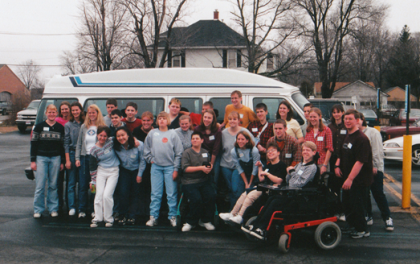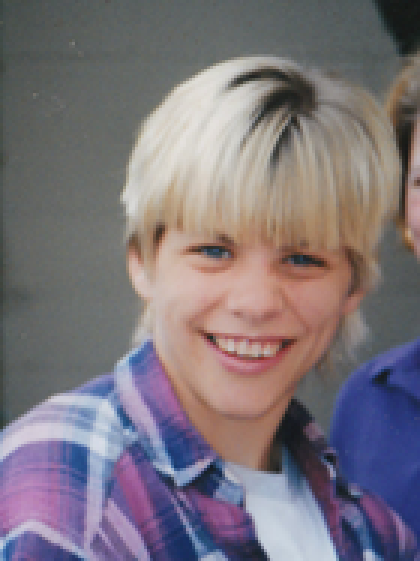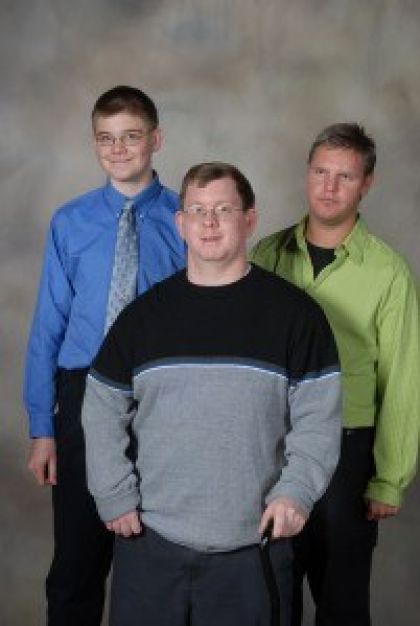Creating Connections: the Beginnings

Early Connections participants gathered for an outing!
When South Christian High School (Grand Rapids, MI) opened up its doors to inclusive education in 1994, the Educational Support Services (ESS) staff had no idea how the first three students with disabilities would be accepted by colleagues and peers in the school community. Most teachers and students welcomed inclusion but with some fear and uncertainty.
Over time, however, fear faded as these students became part of the school community. Yet, within a few years, ESS teachers and parents realized that full inclusion meant much more than merely welcoming students with disabilities into the classroom—it had to go deeper.
Full inclusion means engaging the whole student—academically, socially, spiritually, and emotionally.
Early Challenges: More than Physical Presence
In the early days at South Christian, we noticed that while students with disabilities were included in different classes throughout the day, they were often socially isolated. Despite friendly interactions in class, many students with disabilities spent their breaks and lunches in the inclusion room, separated from their peers. They wanted the same things their peers did: to have friends who would greet them in the hallways and spend time with them outside of school.
We realized that simply having students with disabilities physically present in the school didn’t equate to full inclusion. We needed to offer more than surface-level interactions.
The Lessons We Learned from Our Students
As is often the case, the students we aimed to educate ended up educating us. One such student was Hennie, who walked through the doors of South Christian in 1995. Hennie, whose walking gait and speech were affected by cerebral palsy, showed us the power of joy, faith, and unconditional love. She became a beacon of light to the entire school community.

Hennie's personality, love, joy, and faith taught the entire South Christian community
The following year, Tim Litton joined the freshman class. Tim, who also had cerebral palsy and a significant hearing impairment, longed for friendships where he would be seen as “differently-abled, not disabled.” His wish came true through a group of peers—Ben, Adam, and Hess—who formed the “BAH” group. Their friendships have endured for over 20 years.

Through his positive attitude and longing for friends, Tim Litton (center) helped set the foundation for the Connections program.
Both Hennie and Tim taught us that academic inclusion wasn’t enough. Even though students like the "BAH" group worked to bridge the gap, there was still an element of separation for much of the school day. Just as our country has long recognized that “separate does not mean equal,” we began to understand that true inclusion meant focusing on social inclusion as well.
This realization marked the beginning of the Connections program—a focused effort to create meaningful social connections between students with and without disabilities.
